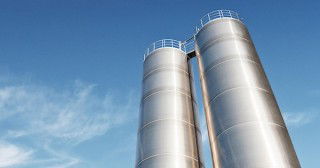Since its invention 40 years ago, the roller press has continuously improved and expanded its use in the cement and mineral-processing industries. KHD tracks the changes since the technology’s introduction and celebrates the advances that have benefitted cement producers during this time. By Dr Stefan Seemann, KHD Humboldt Wedag GmbH, Germany.
Some four decades ago, the concept of a revolutionary comminution process found its way across the desks of one of Germany’s Patent and Trade Mark Offices as a patent application under the title “Method of fine and very fine comminution of materials having brittle behavior”. Professor Klaus Schönert was the inventor of this process for the comminution of material with high pressure, which was further developed during the following decades to become the most energy-efficient grinding circuit in the cement and minerals industry. Currently the technology provides energy savings of 50 per cent, and in some cases even more, when compared with traditional grinding systems such as ball mills and up to 20 per cent when compared with vertical roller mills.
Based on the findings of Prof Schönert, KHD Humboldt Wedag GmbH put the world’s very first industrial roller press into operation in 1985. Designed for granulated blastfurnace slag (GBS), this roller press remains in operation. However, roller press design has been adapted to grind raw materials, cement and slag as part of a continuous process to improve and extend its use. Today it remains the most cost-efficient comminution method.
